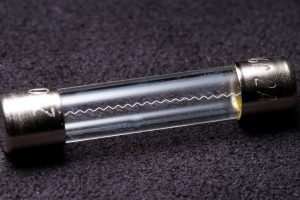If you haven’t been following along so far, you may want to go back and check out Part 1 and Part 2 first. As a refresher, in Part 1 we talked about memory and specifically non-volatile memory and why it’s important to RFID tags.

We also covered the different forms of radiation resistance, and realized what we are looking for is electronics as well as stored data that can survive a radiation dose even if those electronics cannot operate in the presence of radiation. Then in Part 2 we got into the details of how flash memory works and why it doesn’t like radiation, or high temperatures or long lifecycles for that matter. Now in Part 3 I’ll explain what’s so special about TegoTags that allows them to do so much better than flash memory parts.
You’ll remember from Part 2 that I described cups of water as being able to store two states – full or empty, that are representative of the ones and zeros that we need for digital boolean logic. For the Tego memory structure I have a similar analogy, but instead of cups of water we have electrical fuses. Fuses are basically a strand of wire that, just like other wires, can be used to complete an electrical circuit thus allowing current to flow. But unlike other wires, fuses are made of carefully selected materials and dimensions so that if the current-voltage combination in the wire exceeds a certain limit, the fuse “blows”. When the fuse blows, a section of the wire is typically completely vaporized – there’s nothing left. At that point, the fuse has been converted to an open circuit and current stops flowing.
Fuses are usually used as a form of over-current protection to prevent damage to electronics and fires in houses. But because the fuse can exist in two states – blown or not blown, a collection of fuses could be used to store binary data similar to the cups of water. Unlike the cups though, that could be emptied or filled at will, once a fuse is blown there’s no going back. So whereas the cups could be “rewritten”, a message carried by a collection of fuses is permanent. That permanence can be a good thing though. Unlike the cups of water which could be disturbed by sun or wind or rain, the fuses are downright rugged. Once blown, no amount of sunlight is going to cause a fuse to regrow. Even in the unblown state, there is little chance of conversion to an open-circuit unless it’s for the right reason.
The memory on the TegoChip is actually very similar to a collection of fuses. Ok, we’re not literally blowing fuses. There are no tiny explosions happening on the chip. But the chip does contain semiconductor structures that start out as open circuits, and after exposing them to enough voltage and current, those structures are irreversibly transformed into short circuits. This is very different from the flash memory storage described in Part 2. I often refer to flash as an example of an electronic memory, meaning the circuit structures always remain the same, while electrons are routed around and stored in those structures to form data. The fuse memory on the other hand I refer to as mechanical storage. The memory elements themselves undergo a physical change in order to represent a zero or a one. And that physical change is permanent. As with the real-life fuses, no amount of temperature or radiation is going to cause the fuse on the TegoChip to “regrow”. And that’s exactly why the data stored in a TegoChip will last for hundreds of years. Or in the presence of high temperatures. Or when bombarded with obscene amounts of radiation.
But wait, the memory is permanent. That’s means those words in memory cannot be changed; cannot be rewritten. Isn’t that a problem? It certainly could be, but that’s another ingredient in the Secret Sauce. Let’s back this up a little. Flash memory is indeed a type of RAM, or random-access memory, which means if I write a value to an address in memory, I can come back later and store a different value in that same location. Each location is rewritable. The Tego fuse memory is known as PROM or programmable read-only memory. The “programmable” part of that means the memory can written to or “programmed” to give it its initial value. But after it’s programmed, the memory can only be read – no more writes allowed. (We also sometimes refer to this as OTP or one-time programmable.) That’s very different from flash and therefore very different from every other RFID tag. But is it a problem?
This is where it pays to think about exactly how the memory in an RFID tag gets used. The “ID” in RFID is actually pretty useless if it keeps changing. The ID number on a tag is a lot like a social security number. If everybody keeps changing their number, it’s just no longer useful as an identifier. The same is true for a lot of data that would go into the User Memory of a tag. Suppose you wanted to store someone’s birth certificate on the tag, like on a passport or driver’s license. By it’s very nature, that data should never get changed, so it’s perfectly suited to the Tego fuse memory.
On the other hand, not all data is suitable for permanent storage. Even the ID number sometimes goes through a few iterations before its made permanent. So we’ve got that covered too. Part of the Tego fuse memory is a memory management structure that makes PROM locations look like RAM. How does it do that? By using multiple PROM locations. Suppose you write the value “Amy” to location 100 in User Memory. Later you come back and write “Nancy”, also to location 100. When you read back from location 100, what value will you get? Since this is a TegoChip made up of only one-time programmable fuse memory, you might be thinking you’re going to get “Amy”, but in fact you’re going to get “Nancy”. Internally, both values are stored. “Amy” and “Nancy” are both permanent residents of the TegoChip, but the memory manager knows enough to return Nancy to you and keep Amy a secret.
So there it is – the Secret Sauce revealed. The TegoChip uses permanent “mechanical” storage in the form of on-chip fuses to store data in incorruptible structures, and it uses behind-the-curtain trickery to make the memory look re-writable just like flash-based chips. Pretty snappy, huh?
I know, I know, there’s still one unanswered question here: How does FRAM fit into all this? FRAM will be the subject of Part 4. (I did say there was going to be a Part 4, didn’t I?) For now know that FRAM is neither flash nor fuse based. Get ready for PZT crystals.




